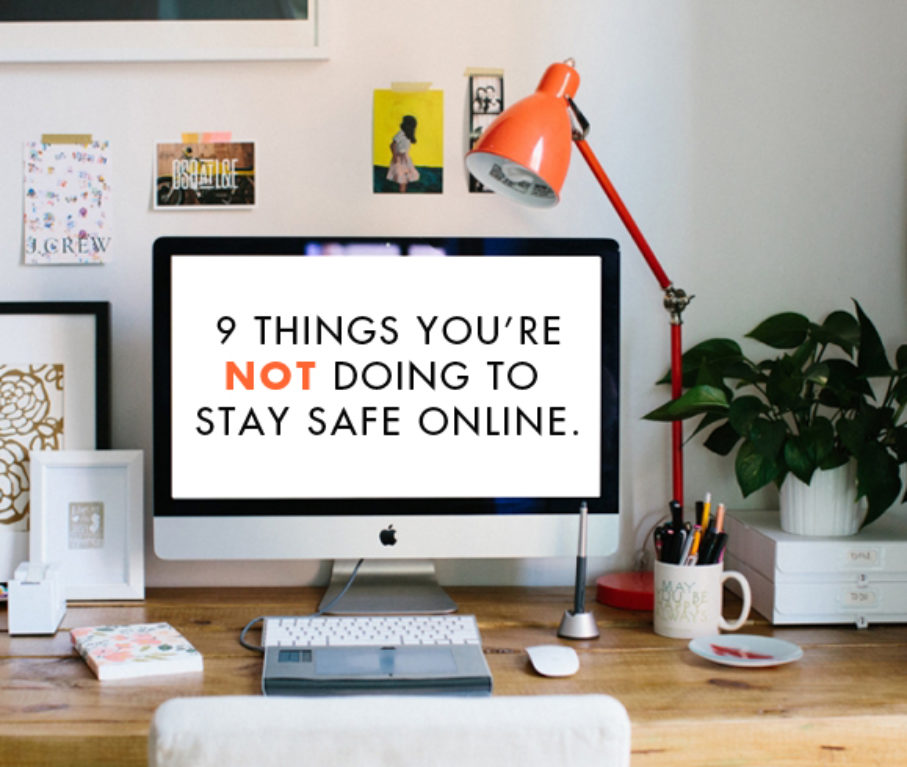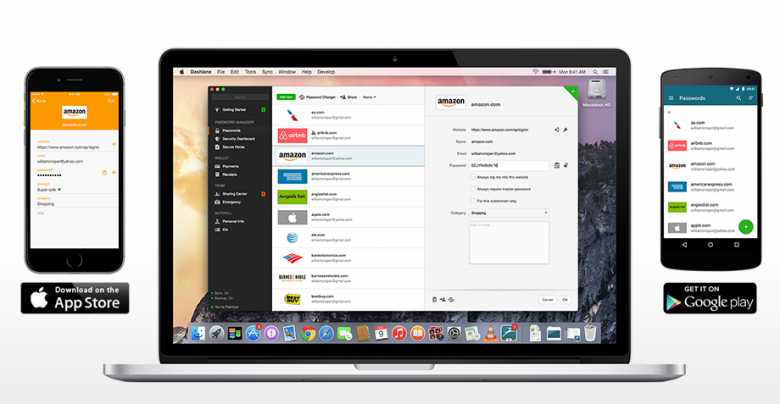In an era where hackers can take down an entire film studio, and security breaches are a nightly news story, it’s understandable that we’re all a little skittish about shopping/banking/living online.
That doesn’t mean you have to abandon your Zappos habit (don’t even joke about stuff like that!). It does mean, however, that you’ve got to start taking your online safety seriously. Don’t have the time? Maybe you don’t have time to lock your front door either.
Hackers have exposed the personal information of over 110 million Americans in the last 12 months alone, according to the National Cyber Security Alliance, so whether your information is next is more like a when than an if. While retailers, email providers, and the big companies we trust our personal information with should be responsible enough to keep it safe, they’re just not— it’s up to you to be your own “Chief Security Officer”. Fortunately, there are some really quick, easy things you can do to protect yourself and stay safe online. Here are nine things you’re not doing (but should be):
1. Securing your browser
Your browser contains security settings that you can control. Is your phishing and malware protection enabled? Have you turned your security setting to “high”? It just takes a few clicks. Get step-by-step instructions on how to secure the major browsers here.
2. Running an update
Have you installed an update on your browser lately? Though they may seem annoyingly time-consuming, those updates are often created to fix security loopholes, so you want to be sure your browser is current. Go to your browser’s drop-down tab and look for “updates” to check if you need to run one.
3. Creating strong passwords
No one wants to forget their password (and then keep trying wrong ones, and get shut out of an account, ugh), which is probably why the most common password is…Password1. Not exactly stealth. In fact, 80% of security breaches in 2012 were caused by weak passwords, according to Chicago-based information security company Trustwave. If you can remember it, it can be hacked. Instead, try a password randomizer like this one, and store them all in a password manager like 1Password or Dashlane.
4. Creating unique passwords
Tempting as it is to reuse the same passwords for multiple accounts (especially when you’re signing up for a shopping site, and eager to complete your purchase), don’t. If a hacker does break into one account, you don’t want him or her to have the keys to them all. Your email account is especially critical here, since you can use your email to reset any password. Make sure your email password is strong, and not repeated elsewhere.
5. Updating your antivirus software
Hackers gonna keep on hackin’, shoppers gonna keep on shoppin’… and you’ve gotta keep on updating your antivirus software. The latest malware attacks won’t be addressed by your old program, so keep it current.
6. Looking for the “s”
When you see HTTPS (or the image of a lock) in a site’s URL, it means your session is encrypted, so outside parties can’t “listen in” on your activities. In other words, they can’t lift your credit card info while you’re paying for that new jumper. If you don’t see the “s”, keep your credit card in your wallet.
7. Leaving the debit card in your wallet
Credit cards often have a cap— most companies will alert you if they spot an unusual charge. A credit card also has a dispute department that will go to bat for you if there’s a fraudulent charge. If you use your Debit card, you don’t get any of these perks. Don’t use your debit card to shop online.
8. Putting on a mask
Each time you enter your personal info on a site, you’re opening yourself up to possible identity theft. To thwart attackers, did you know you can mask your email address, credit card info and even your phone number with a program like Abine Blur? Now you get to decide who sees your information, and who doesn’t.
9. Using an anti-identity theft program
A program like LifeLock constantly scans transactions under your name, and pings you if something seems out of the ordinary. (For instance, “Did you just apply for a car loan?”) If it wasn’t you, LifeLock’s team will work with you to make things right. Some banks have similar alert programs; check yours to find out.
How do you stay safer when you shop online? Leave me a tip in the comments!



